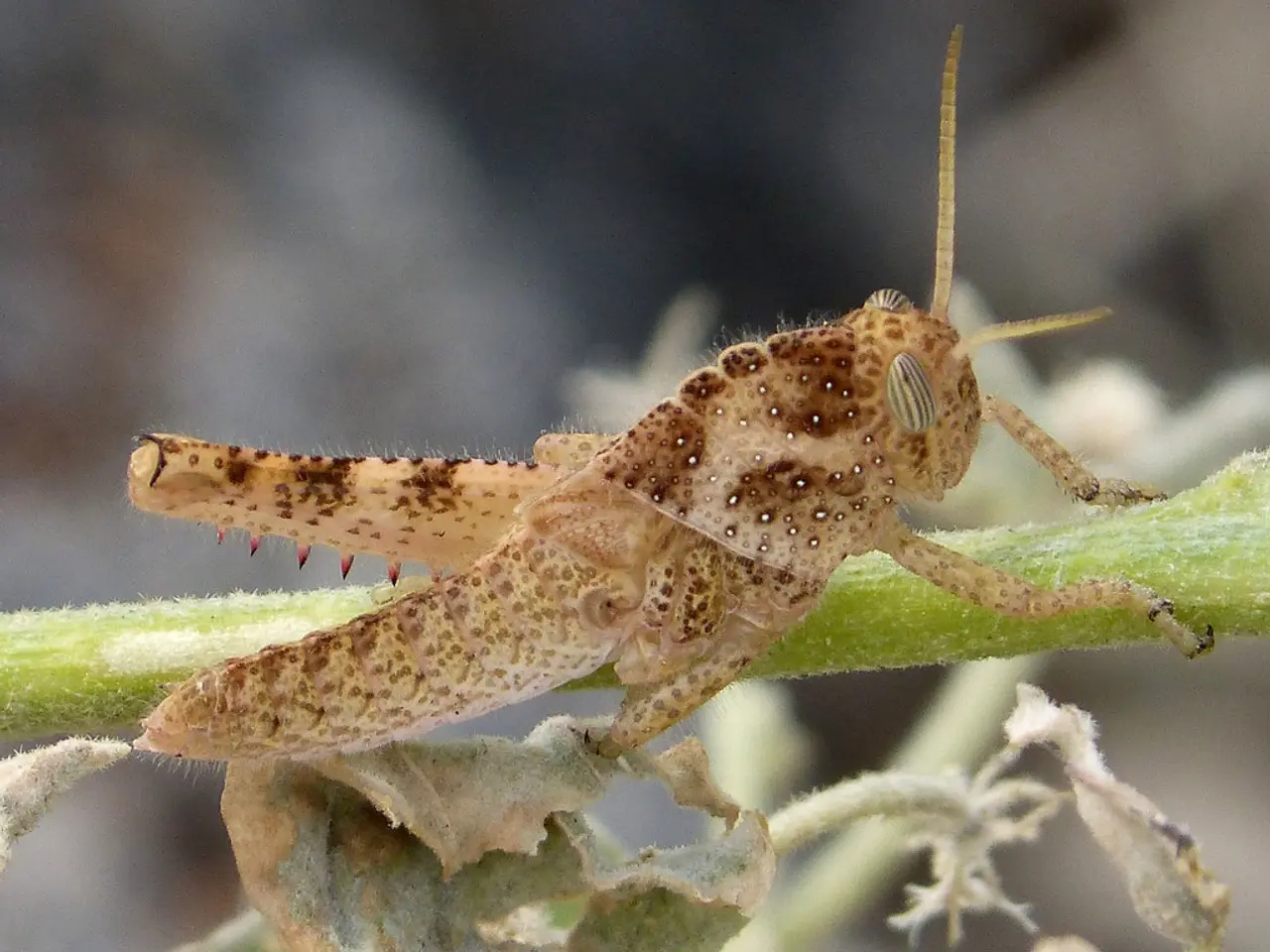Fungal invasion dubbed Botrytis Gray Mold affects ornamental plants in greenhouse cultivation
In the world of greenhouse horticulture, one common foe that growers face is gray mold, caused by the pathogen Botrytis cinerea. This disease is notorious for affecting a wide variety of floral crops and other types of plants, causing significant losses in yield and plant quality.
Under specific conditions, such as cool temperatures (72-77°F or 22-25°C) and relative humidity at or above 85 percent, with little or no air circulation or free water on the leaf surface, the spores of Botrytis cinerea land on the plant surface, germinate, and penetrate the host plant. Symptoms of flower blight appear as tannish, irregular spots on the flower petals that may eventually coalesce into larger areas.
If left unchecked, the fungus will grow and sporulate, and the newly produced spores will be the source of infection for other hosts in the greenhouse. The fungus produces a large amount of spores that are dispersed in the greenhouse via air currents. Infected buds fail to open and may sometimes abort, while infected seeds may fail to germinate, and young seedlings may wilt or collapse at or near the soil line.
Symptoms of gray mold vary depending on the host, environmental conditions, and plant growth stage. They may include pre- and post-emergence damping off, leaf spots, flower blights, bud rots, stem cankers, stem and crown rots, cutting rots, and in extreme cases, plant death. The fungus often targets soft, weakened, or dead tissues such as buds, seedlings, and cuttings.
Effective control of gray mold involves a combination of cultural practices and chemical treatments. Improve air circulation and reduce humidity around plants by proper plant spacing and pruning to minimize leaf wetness, which is critical since moisture promotes disease development. Avoid overhead irrigation and remove infected plant debris promptly to reduce sources of inoculum. Maintaining environmental conditions unfavorable for Botrytis (e.g., lower humidity, good air flow) can reduce disease pressure.
Fungicides such as azoxystrobin (e.g., Heritage Fungicide, which is labeled for greenhouse ornamentals) are effective against Botrytis cinerea. These fungicides usually belong to specific groups (e.g., Group 11 – QoI fungicides) and should be used according to resistance management guidelines to prevent pathogen resistance. Other fungicides and biological agents have shown promise, such as products containing Bacillus subtilis, which have been successfully vectored by bumblebees (Bombus terrestris) in greenhouses, reducing gray mold infection by about 54% with efficacy comparable to traditional chemical sprays.
Commercial products recommended for similar crops (e.g., hemp) include biopesticides like LifeGard WG, Regalia, and Stargus, which have shown to reduce Botrytis incidence and severity. In summary, an integrated approach combining good cultural hygiene, environmental control, biological agents (like Bacillus subtilis vectored by bumblebees), and judicious fungicide applications (e.g., azoxystrobin-based products) is effective for managing gray mold in greenhouse-grown herbaceous ornamentals.
It is essential to remember that sanitation practices before, during, and after each cropping cycle are the first important steps to achieve good control of gray mold. Infected plant material should not be allowed to sit in trash cans within the house, as the fungus will continue to grow and sporulate on the dead and dying tissue. Overhead watering is discouraged to avoid formation of free moisture on plant surfaces, which can allow for spores to become airborne and further infections to occur.
By adhering to these practices, greenhouse growers can significantly reduce the impact of gray mold on their crops, ensuring a healthier and more productive growing environment.
Science plays a crucial role in addressing medical-conditions like gray mold, particularly in health-and-wellness sectors such as greenhouse horticulture. For example, understanding the preferred soil conditions of the Botrytis cinerea pathogen can help growers minimize its impact on crops, just as knowing the ideal environmental conditions can reduce the risk of gray mold. By implementing sanitation practices and employing scientifically-backed methods like the use of certain fungicides and biological agents, growers can ensure the wellbeing of their crops and maintain a productive greenhouse environment.




